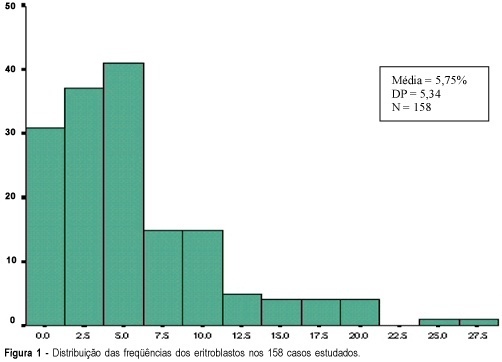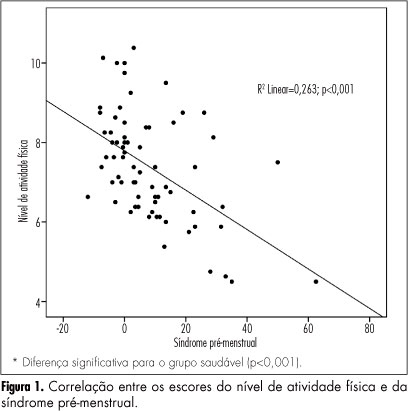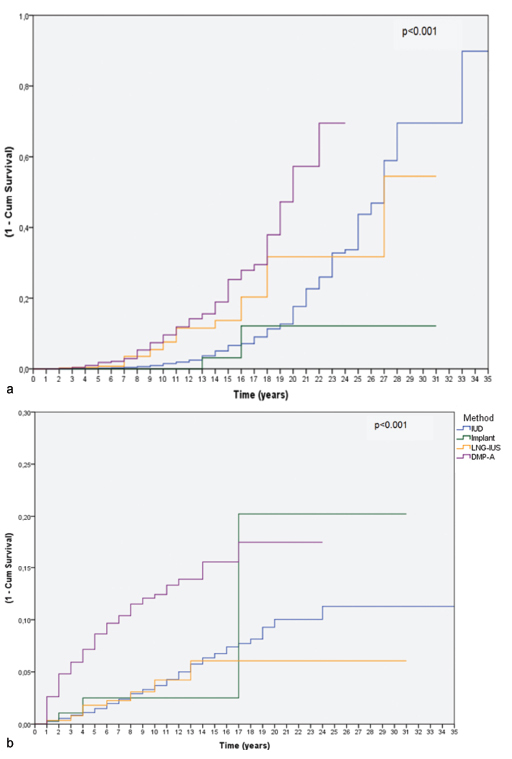Summary
Revista Brasileira de Ginecologia e Obstetrícia. 2023;45(1):21-30
To evaluate the rates of precancerous lesions, colposcopy referral, and positive predictive value (PPV) by age groups of a population-based screening with DNA-HPV testing.
The present demonstration study compared 16,384 HPV tests performed in the first 30 months of the program with 19,992 women tested in the cytology screening. The colposcopy referral rate and PPV for CIN2+ and CIN3+ by age group and screening program were compared. The statistical analysis used the chi-squared test and odds ratio (OR) with 95% confidence interval (95%CI).
The HPV tests were 3.26% positive for HPV16-HPV18 and 9.92% positive for 12 other HPVs with a 3.7 times higher colposcopy referral rate than the cytology program, which had 1.68% abnormalities. Human Papillomavirus testing detected 103 CIN2, 89 CIN3, and one AIS, compared with 24 CIN2 and 54 CIN3 detected by cytology (p < 0.0001). The age group between 25 and 29 years old screened by HPV testing had 2.4 to 3.0 times more positivity, 13.0% colposcopy referral, twice more than women aged 30 to 39 years old (7.7%; p < 0.0001), and detected 20 CIN3 and 3 early-stage cancer versus 9 CIN3 and no cancer by cytology screening (CIN3 OR= 2.10; 95%CI: 0.91 -5.25; p = 0.043). The PPV of colposcopy for CIN2+ ranged from 29.5 to 41.0% in the HPV testing program.
There was a significant increase in detections of cervix precancerous lesions in a short period of screening with HPV testing. In women < 30 years old, the HPV testing exhibited more positivity, high colposcopy referral rate, similar colposcopy PPV to older women, and more detection of HSIL and early-stage cervical cancer.
Summary
Revista Brasileira de Ginecologia e Obstetrícia. 2002;24(1):21-28
DOI 10.1590/S0100-72032002000100004
Purpose: to investigate antepartum factors related to cesarean section and develop a cesarean section predictive model. Methods: the study design was a retrospective cohort which included all the cared 843 deliveries in a third level unit from June 1993 through November 1994. Children with 1,000 g birthweight and above were included. The dependent variable was cesarean section (c-section). Independent variables were antepartum factors related to c-section. Logistic regression was used to develop a predictive model. Results: our model showed risk of c-section according to the following variables: maternal age under 20 years (OR = 0.396) and over 28 years (OR = 2.133); previous vaginal deliveries (OR = 0.626); previous c-section (OR = 4.576); prenatal care (OR = 2.346); breech presentation (OR = 4.174); twin pregnancies (OR = 14.065); late obstetrical hemorrhage (OR = 28.189); mild preeclampsia (OR = 2.180); severe preeclampsia OR=16.738; chronic hypertension OR=4.927 and other clinical problems (OR = 2.012). The predictive model had a concordance of 82.3% between probabilities and responses. Conclusions: our study identified 12 antepartum factors related to c-section. It was possible to develop a cesarean section predictive model taking into account all previously identified antepartum risk factors.
Summary
Revista Brasileira de Ginecologia e Obstetrícia. 2001;23(1):21-27
DOI 10.1590/S0100-72032001000100004
Purpose: nucleated red blood cell counts are increased in several hypoxic conditions. The authors aimed to establish if there is a correlation between erythroblast counts in the umbilical vein of newborns and the presence of perinatal hypoxia detected by acid-base balance parameters. Methods: blood samples were obtained from the umbilical vein of pregnant subjects with at least 37 weeks of gestation attended at the Hospital de Alvorada-RS, just before the newborns' first breathing movement. Part of the blood was placed in an EDTA-containing vial and white and red blood cells were analyzed. The remaining amount of blood was aspirated into insulin type syringe previously washed with heparin and pH, pO2, pCO2 and acid-base excess/deficit were analyzed. Slides were also prepared with the panoptic stain for visual identification and count of the erythroblast number. The erythroblast/leukocyte ratio was calculated. Results: of the 158 cases included in the study, 55 were considered free of perinatal hypoxia. In this population, the average erythroblast rate was 3.9% with a standard deviation of 2.8%. The minimum and maximum values were 0% and 10%, respectively. When considering all the cases, the average was 5.7%, with a standard deviation of 5.3%. The minimum and maximum values were 0% and 28%, respectively. Application of Pearson's test for the analysis of the erythroblast rate and acid-base parameters showed a significant correlation for pH and pCO2. The construction of a Receiver Operation Curve showed that for an erythroblast rate of 5%, a 7.25-pH cutoff yields a sensitivity of 54% and a specificity of 56%. Out of the 23 newborns whose normoblast rate was greater than 10%, there was acidemia in 7 (30.4%), 11 (48.7%) were large for gestational age, 3 (13%) were small for gestational age, 7 (30.4%) were anemic, and in 3 (13%) there were no abnormalities. Conclusions: in newborns from uncomplicated pregnancies and deliveries, the erythroblast rate was less than 10%. When it was greater than 10%, a correlation was found mainly with large or small for gestational age, fetal anemia and acidemia.

Summary
Revista Brasileira de Ginecologia e Obstetrícia. 2013;35(5):210-214
DOI 10.1590/S0100-72032013000500004
PURPOSE: To determine the relationship between the level of physical activity and the incidence of premenstrual syndrome. METHODS: A cross-sectional design was conducted on 71 apparently healthy university students (24.4±4.8 yrs; 61.5±8.7 kg; 1.63±0.06 m). The level of physical activity was determined with a questionnaire and the presence of premenstrual syndrome was verified based on daily symptoms self-reported in a diary during two consecutive menstrual cycles. 17 premenstrual symptoms are considered in the diary, which should be scored on a 5-point scale (0-4) according to their occurrence, so that a score can be calculated in each cycle. The occurrence of premenstrual syndrome was considered if three or more symptoms were reported up to six days before menstruation (premenstrual period) and were absent up to six days after menstruation (postmenstrual period). RESULTS: The Spearman correlation coefficient showed a significant and negative relationship between the level of physical activity and premenstrual syndrome score (r=-0.506; 95%CI -0.335 to -0.678; p<0.001). When the participants were divided into a group with a positive diagnosis of premenstrual syndrome (n=31) and a healthy group (n=40), the Mann-Whitney test showed higher habitual physical activity in the healthy group than in the premenstrual syndrome group (7.96±1.17 and 6.63±1.20, respectively) (p<0.001). CONCLUSIONS: There is a negative relationship between the level of physical activity and the incidence of premenstrual syndrome, with women with a positive diagnosis of premenstrual syndrome having a lower level of physical activity than healthy women.

Summary
Revista Brasileira de Ginecologia e Obstetrícia. 2009;31(4):210-210
Summary
Revista Brasileira de Ginecologia e Obstetrícia. 2009;31(4):210-210
Summary
Revista Brasileira de Ginecologia e Obstetrícia. 2016;38(5):210-217
Women require effective contraception until they reach menopause. The long acting reversible contraceptives (LARC) and the depot-medroxyprogesterone acetate (DMPA, Depo-Provera(r), Pfizer, Puurs, Belgium) are great options and can replace possible sterilizations.
To assess the relationship between the use of LARCs and DMPA and terminations ascribed to menopause and sterilizations in a Brazilian clinic.
We reviewed the records of women between 12 and 50 years of age attending the clinic that chose to use a LARC method or DMPA. Cumulative termination rates due to sterilization or because the woman had reached menopause were computed using single decrement life-table analysis over 32 years. We also examined all records of surgical sterilization at our hospital between the years 1980-2012.
Three hundred thirty-two women had continuously used the same contraceptive until menopause, and 555 women had discontinued the method because they or their partners underwent sterilization. From year 20 to year 30 of use, levonorgestrel intrauterine-releasing system (LNG-IUS - Mirena(r), Bayer Oy, Turku, Finland; available since 1980), copper intrauterine device (IUD - available since 1980) and DMPA users showed a trend of cumulative higher discontinuation rates due to menopause when compared with the discontinuation rates due to sterilization. Over the study period, a steep decline in the use of sterilization occurred.
Over the past 15 years of research we have observed a trend: women usually preferred to continue using LARC methods or DMPA until menopause rather than decide for sterilization, be it their own, or their partners'. The annual number of sterilizations dropped in the same period. The use of LARC methods and DMPA until menopause is an important option to avoid sterilization, which requires a surgical procedure with potential complications.

Summary
Revista Brasileira de Ginecologia e Obstetrícia. 2008;30(4):210-210